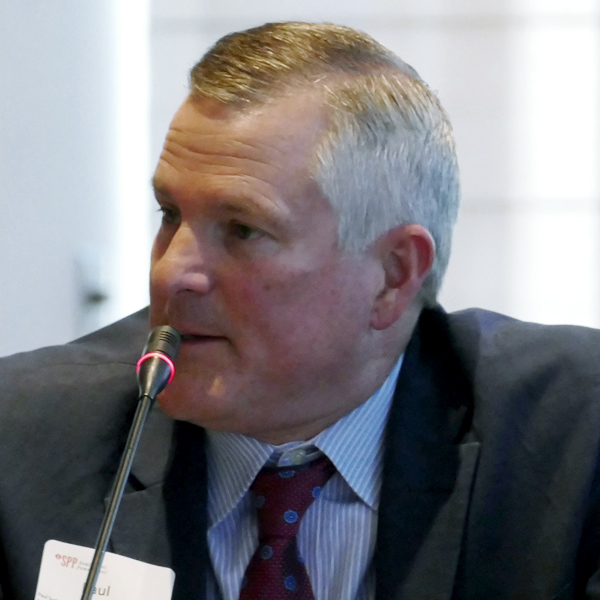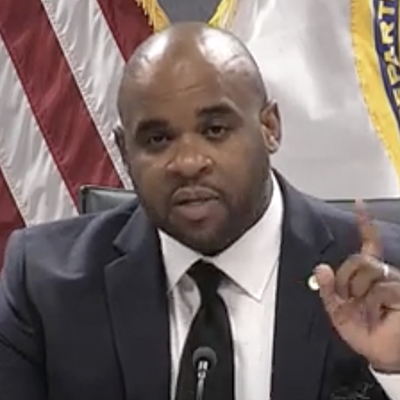The National Highway Traffic Safety Administration (NHTSA) on Friday issued a proposal for a major increase in national fuel efficiency standards for cars, light-duty trucks and some heavy-duty vehicles, aimed at saving drivers money on gasoline while cutting both U.S. greenhouse gas emissions and dependence on foreign oil.
The 696-page Notice of Proposed Rulemaking would require automakers to hit a fleetwide fuel Corporate Average Fuel Efficiency (CAFE) of 66.4 mpg for passenger cars and 54.4 mpg for light-duty trucks for their 2032 models.
The standard for heavy-duty pickups and vans (HDPUVs) — defined as between 8,501 and 14,000 pounds — would taper off from 4.4 gallons needed to drive 100 miles in the 2030 model year to 2.6 gallons in 2035.
However, the NHTSA qualified those numbers by noting “that real-world fuel economy is generally 20 to 30% lower than the estimated required CAFE level.”
The NHTSA requirements for fuel efficiency for 2023 models are 50.5 mpg for passenger cars and 35.8 mpg for light-duty trucks, according to figures from the Department of Energy. According to the NHTSA, passenger cars include sedans, station wagons and two-wheel drive crossovers and SUVs, while the light-duty truck category covers four-wheel-drive SUVs, small pickup trucks, minivans, and passenger and cargo vans.
The proposed standards, covering model years 2027-2032, would push automakers to improve fuel efficiency 2% per year for passenger cars and 4% per year for light-duty pickups. The standards for HDPUVs would tighten 10% per year from 2030 to 2035.
The current standards for passenger cars and light trucks end in 2026. The NHTSA said the 2030 starting date for the HDPUV standard is because of “statutory lead time constraints” but did not provide further details.
Previous CAFE standards have set combined fuel efficiency targets for passenger cars and light trucks. However, the NHTSA said, it was setting different standards for the two categories because “manufacturers have already made substantial progress in technology application to passenger cars, such that the possibility for further fuel economy improvements … is relatively limited.
“The agency believes that there is more room to improve the fuel economy of light trucks, in a cost-effective way, and that the benefits of requiring more improvement from light trucks will be significant given their high usage and the fact that they make up an ever-larger percentage of the overall fleet.”
The combined standard for passenger cars and light trucks would be 57.8 mpg in 2032, the agency said.
The NHTSA estimates that the proposed standards would slash fuel consumption by 88 billion gallons for passenger cars and light-duty trucks and 2.6 billion gallons for HDPUVs through 2050. The resulting reductions in carbon dioxide emissions would be 885 MMT for passenger cars and light-duty trucks and 22 MMT for HDPUVs.
The agency estimates that savings from the proposal would exceed costs by $18 billion but that the savings consumers see at the pump would be more modest. For example, lifetime fuel savings of $1,043 for more efficient passenger cars would be offset by an increased cost of $932, delivering net savings of $111 in the 2032 model year. Lifetime net fuel savings for HDPUVs would be about $300 in the 2038 model year.
The release of the NOPR starts a 60-day comment period, and the NHTSA will hold at least one virtual public hearing during that time.
NHTSA vs. EPA
The NHTSA CAFE standards follow proposed standards for tailpipe emissions that EPA issued in April. (See EPA Issues Emissions Rules Aimed at Boosting EVs.)
EPA estimates those standards would cut emissions from light- and medium-duty vehicles by 7.3 billion MT of CO2 between 2027 and 2055 and projects net benefits of $1.6 trillion. Proposed standards for heavy-duty vehicle rules would save 1.8 billion MT of CO2 and yield $320 billion in benefits.
“I want to make clear that EPA and NHTSA will coordinate to optimize the effectiveness of both agency standards while minimizing compliance costs,” acting NHTSA Administrator Ann Carlson told The Associated Press.
The proposed levels were chosen as both technologically and economically feasible, the agency said, noting that by statute, it is not allowed to factor electric vehicles into its efficiency standards, a major difference with the EPA standards, which are aimed at boosting vehicle electrification.
At the same time, automakers can use electric vehicles to meet the standards, the NHTSA said.
Reactions
Sen. Ted Cruz (R-Texas) slammed the proposal as an attack “on affordable gas-powered cars and trucks” and a “de facto EV mandate” that would raise prices and hurt national security.
John Bozzella, CEO of the Alliance for Automotive Innovation, said efforts to align the two standards are “encouraging” but they could still cause problems and extra costs for automakers and consumers.
“Conflicting and overlapping rules are complex and expensive,” Bozzella said in a statement released Friday. “If an automaker complies with EPA’s yet-to-be-finalized greenhouse gas emissions rules, they shouldn’t be at risk of violating CAFE rules and subject to civil penalties that levy costs on consumers and manufacturers — but deliver no corresponding environmental benefits.”
He called for “a single national standard to reduce carbon in transportation — one vehicle fleet and one national standard.”
While earlier raising concerns about penalties for automakers not meeting the NHTSA standards, General Motors released a statement Friday welcoming “the intent to align NHTSA and EPA standards and providing flexibility to industry to achieve these targets.”
The company has committed to selling only all-electric new vehicles by 2035.

